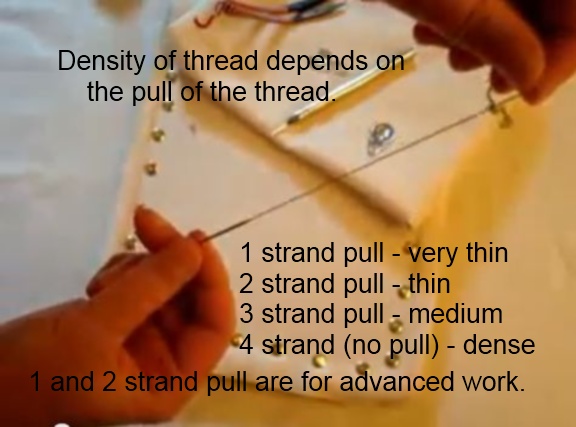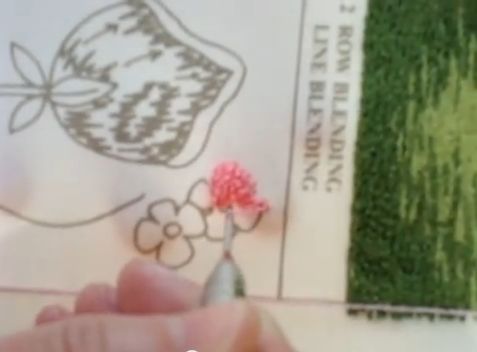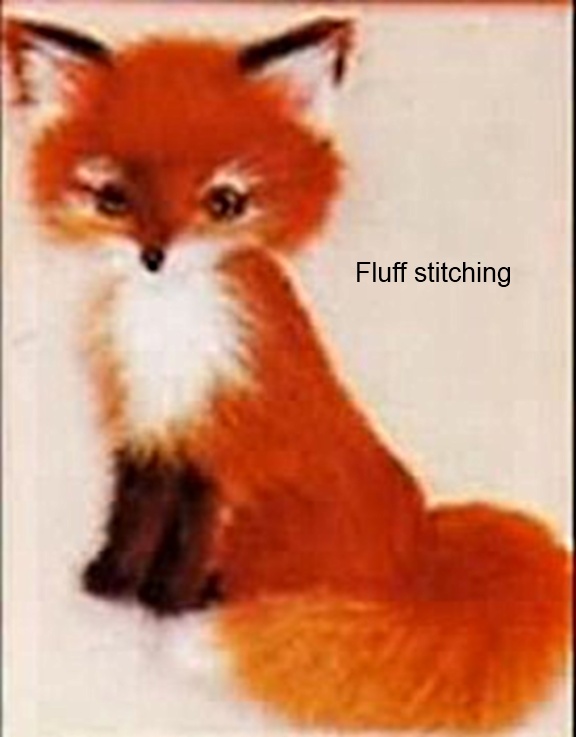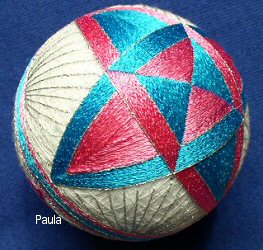Bunka
Embroidery is like painting with thread! And, there is good reason why.
Every
detail about Bunka must be taught and practiced for perfection. This embroidery is not for the faint of
heart. There is nothing like it in
machine embroidery because Bunka is completed with four optional sizes of
thread – from a single skein.
Before
you think I have lost my mind, here is how that is done.
Bunka is
actually a tubular knitted chain, and most commonly comes in skeins but it can
also come on larger spools or bobbins. Unless it is being used in tassels or
the link it usually is "unchained" to a degree for embroidery use.
The end is worked loose, and then gently pull - it unchains itself very much
like when one had to open a bag of potatoes or onions that were in the heavy
paper bags and "sewn" closed at the top (birdseed is probably more
common in today's world). I personally have not seen anything with this closure
for YEARS! This is a diagram from
vintage Bunka that shows the process:

I
cannot translate Japanese, but this diagram is pulling a single thread, then 2
threads, with the next pulling out 3 threads and lastly, the knitted
chain. This reminds me of opening a bag
of sugar, it seems like that was just yesterday.

When
I started to research Bunka Embroidery, I thought I was going to teach it in a
blog. Well, I can honestly say that a
dozen blogs cannot describe everything you need to know. I have already spent 4 hours gathering
information and I am less than half done on this blog. When you need a video instruction on how to
thread the needle, it is not a simple process. . . Whew!!!
Delicate/advanced
Banka Embroidery -


From
the original skein (as in hand embroidery, you will use 2-15 depending on your design), create your
working bobbin.

Planning
the density-to-fill ratio in a drawing that will be followed as you punch your design.

Punching the design using the hand-drawn sample as a guide.

The
fluffing stitch (demo in Video) is simple and creates a third dimension
for animals that is terrific. Did I
mention that there are NO KNOTS IN BUNKA???

Lastly,
Bunka is also done in this round version.
You can see it here.

https://www.bunkacraft.com YouTube is full of Bunka Videos to help you
along your way. This is the site where I
felt I got the most and easiest to understand instructions. My information was gleaned from there and if you are interested in trying this embroidery, videos and helpful data are available at no charge.
https://www.temarikai.com/HowToPages/Bunkathread.html
Is the site where the round ball style was shown.
You may also want to see my blog on Sashiko, it is much easier than this technique.
April is Autism Awareness Month.
The eighth annual World Autism Awareness Day is April 2, 2015. Every
year, autism organizations around the world celebrate the day with
unique fundraising and awareness-raising events. How will you
celebrate?
Use #LIUB to share your experience across social media and help light the world up blue this April!
Join us to Light It Up Blue! Visit www.AutismSpeaks.org/LIUB
If you want to see some really beautiful and caring photos, check Google, LIUB (light it up blue) for stunning pictures. Here is a couple of my favorites.

May you be blessed in ways you have not yet imagined.
Pat